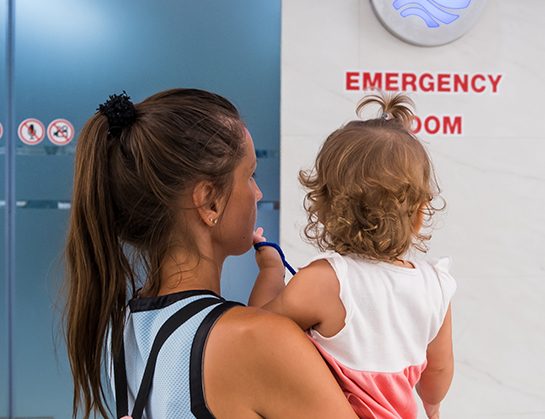There is more to health than just healthcare. Taking a whole person care approach helps mitigate hospital costs and could be a solution to providing more affordable, holistic care to those most in need. Taking this approach makes it essential to shift to a community-led, data-driven effort and moving social services to the frontlines of care.
AN AMBULANCE DOWN IN THE VALLEY
There is an old poem that talks about a road high up on a dangerous cliff. Many people met their demise when traveling the road too fast, falling down the cliffside and into the valley below. The townspeople met together about the issue and argued over what to do:
“So the people said something would have to be done,
But their projects did not at all tally;
Some said, ‘Put a fence ’round the edge of the cliff,’
Some, ‘An ambulance down in the valley.’”1
It seems obvious that a fence on the cliff is a much better option than an ambulance down in the valley—it is far more effective at saving both lives and money—yet so often, measures to help those most in need are focused solely on diagnostic care instead of preventative. While there are a number of possible reasons why this is the case (including financial viability, workforce size, and immediate need)2, research shows that when focusing only on treating what has already happened, rates of future instances do not decline.
This concept is relevant in more than just poetry. For example, people experiencing homelessness visit the ER on average 5 times a year, accruing an average estimate of $27,000 in costs that they cannot pay for3. Of these visits, 80% could be treated with significantly cheaper preventative care4, yet the barriers of accessing this kind of care (correlated with measure of social determinants of health, or SDoH) make it almost impossible for these people to seek such treatments.
The economic impact of giving these people experiencing homelessness preventative care—such as housing and regular physician visits—is significant; one study found that doing so decreases healthcare costs by 59%, ER costs by 61%, and total hospitalizations by 77%5. For a single community, this could easily translate to millions of dollars that could then be reallocated to other preventative measures.
CONSTRUCTING A FENCE ON THE CLIFF
Understanding just how effective preventative care can be, the next question becomes, how do we make it happen? The answer is surprisingly simple: adapt to a whole person care approach6. Doing so means recognizing that there is more to health than just healthcare and combining resources horizontally can have a significantly powerful effect in improving the quality of life for people most in need.
Central to whole person care is understanding and utilizing SDoH. These determinants—such as access to food, transportation, and housing—all work together to either increase or decrease a person’s health7. More often than not, they are compounding, which is why programs are most successful when they can address not only one but all SDoH through a holistic approach.
Some communities have already begun implementing such approaches, and with great success. In Milwaukee, Wisconsin, the Aurora Sinai hospital began placing social workers in their emergency rooms to identify “frequent fliers” (typically homeless people with no other access to healthcare or social services), then worked with them to find preventative care, set up appointments, and access transportation8. Within four months of this initiative, these people reduced their ER visits by 68%, and the cost for the hospital dropped more than $1 million, from $1.5 million to only $440,000.
The Aurora Sinai hospital reports that while the coordination took a lot of effort, the immediate savings made the initiative more than worth it.
SHIFTING THE FRONTLINE TO SOCIAL SERVICES
Such a radical change for health services doesn’t happen accidentally. It requires a community-led approach to care, with social programs and services working together with clear communication to reach an effective solution9. Researchers report that this simply cannot be done without a push for data-driven choices. Case management solutions, like ClientTrack, allow data coordination between social programs to be conducted seamlessly. When initiatives can communicate their data clearly, whole person care becomes not just a thought, but reality.
More than anything, placing social programs at the frontline of issue response—such as redirecting people experiencing homelessness to preventative care instead of the ER—can have large impacts both economically and on the quality of life for the individual.
WORKS CITED:
- https://www.commonwealthfund.org/blog/2020/essential-social-services-are-struggling-survive-covid-19-crisis
- https://www.ncbi.nlm.nih.gov/pmc/articles/PMC4046466/#:~:text=Homeless%20people%20visit%20the%20emergency,most%20frequent%20users2%2C3
- https://greendoors.org/facts/cost.php
- https://medcitynews.com/2020/10/the-new-frontline-of-care-social-services/?rf=1
- https://medcitynews.com/2020/10/the-new-frontline-of-care-social-services/?rf=1
- https://www.npr.org/sections/health-shots/2015/10/23/451154605/a-hospital-reduces-repeat-er-visits-by-providing-social-workers
- https://medcitynews.com/2020/10/the-new-frontline-of-care-social-services/?rf=1



